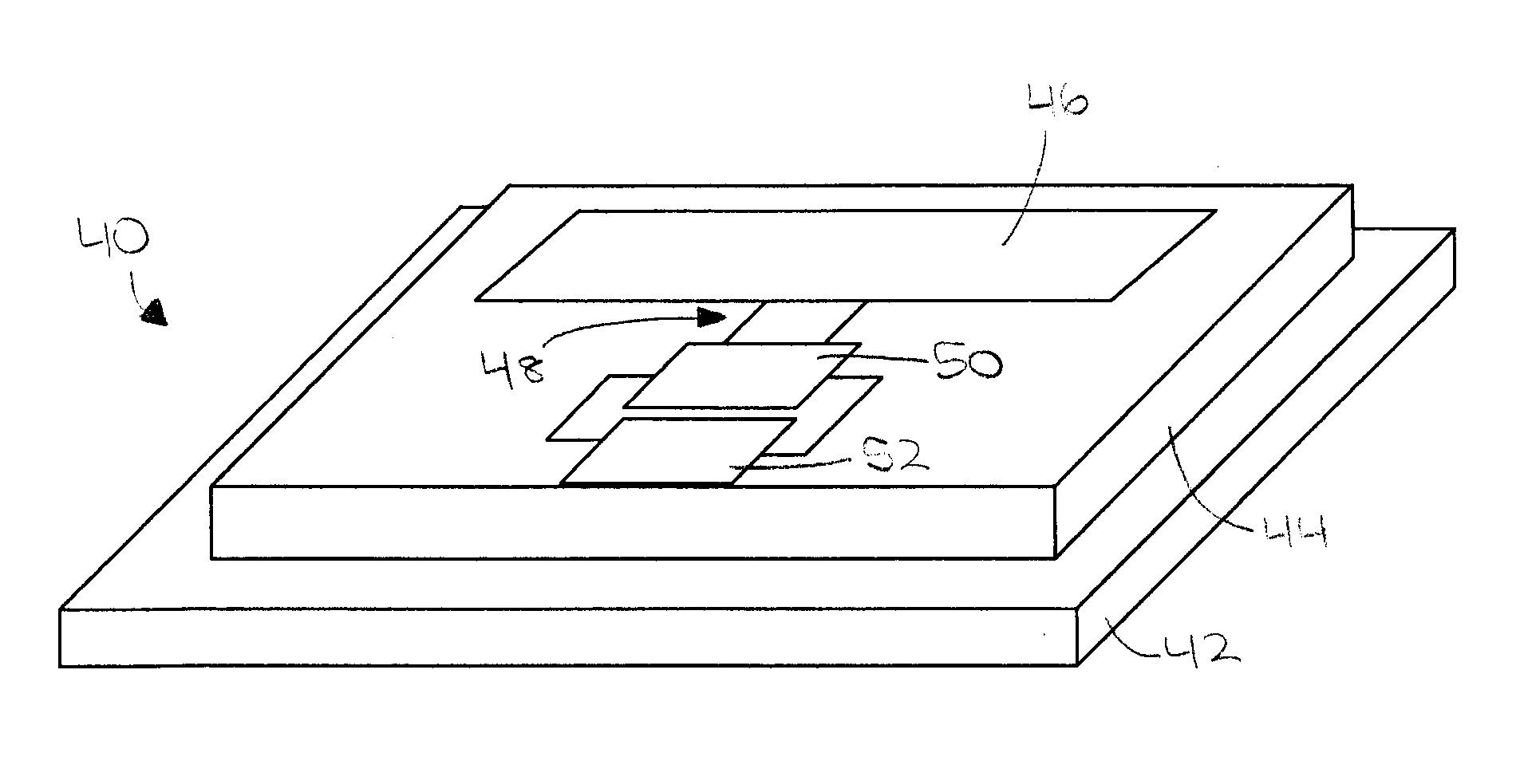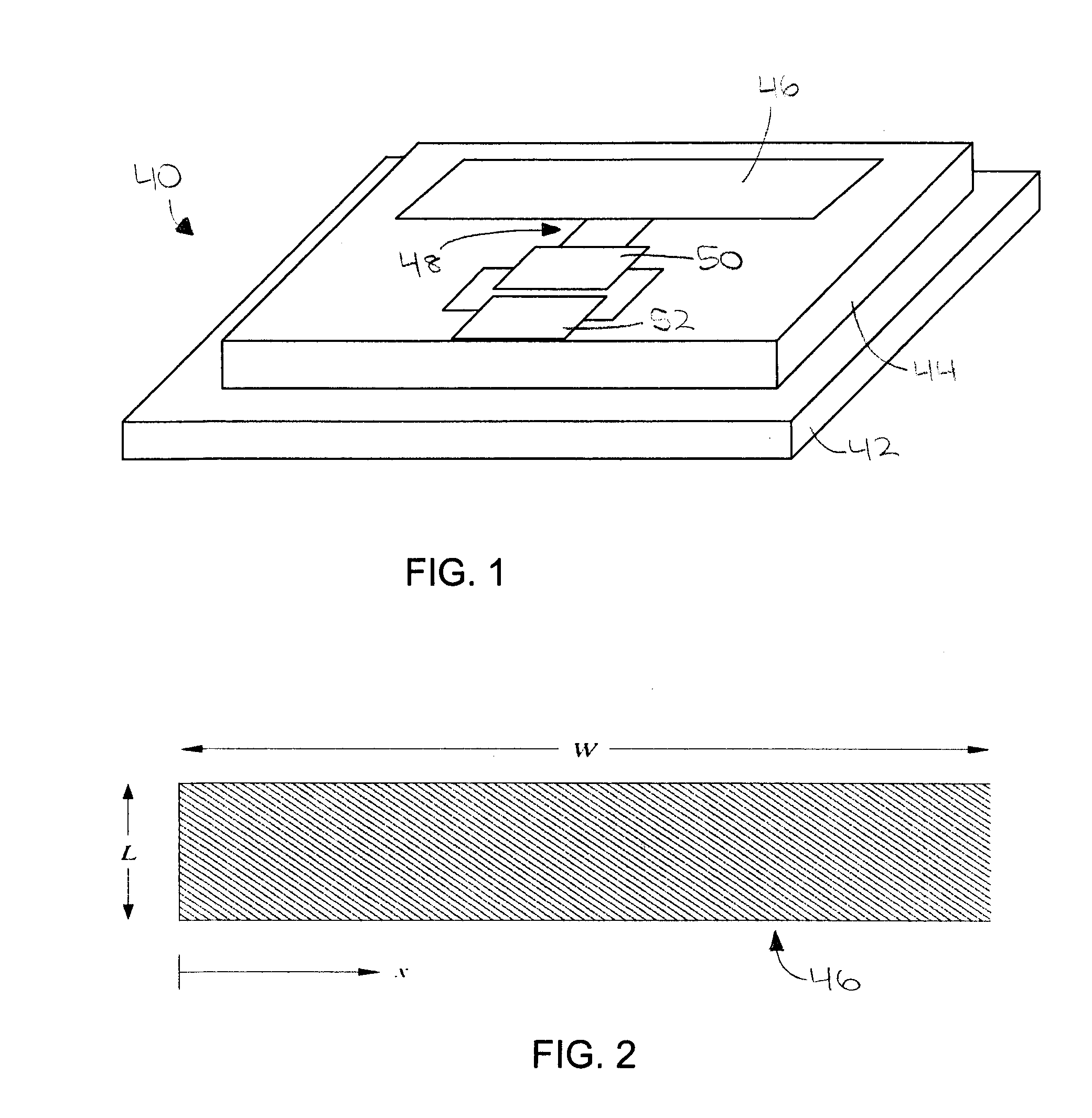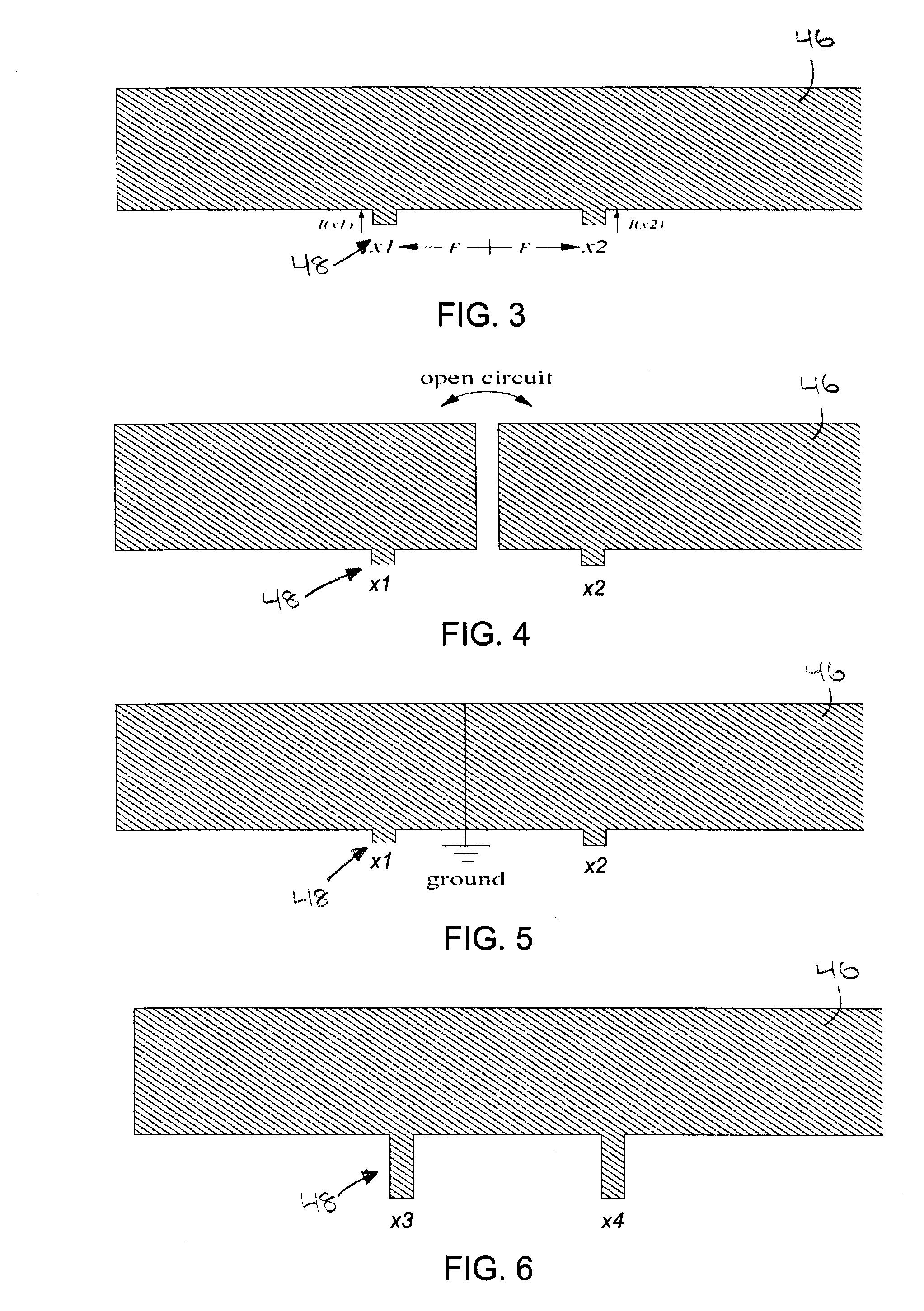Microstrip antenna for RFID device
- Summary
- Abstract
- Description
- Claims
- Application Information
AI Technical Summary
Benefits of technology
Problems solved by technology
Method used
Image
Examples
Embodiment Construction
, below.
BRIEF DESCRIPTION OF THE DRAWINGS
[0023] The following drawings form part of the present specification and are included to further demonstrate certain aspects of the present invention. The figures are examples only, and do not limit the scope of the invention.
[0024]FIG. 1 is an isometric view of a model RFID tag to which the improvements of the present invention can be applied.
[0025]FIG. 2 is a plan view of a model microstrip antenna such as may be used in implementing the improvements of the present invention.
[0026]FIG. 3 is a plan view of the microstrip antenna having first and second feed structures.
[0027]FIG. 4 is a plan view of the microstrip antenna having first and second balanced feed structures driven in an even mode.
[0028]FIG. 5 is a plan view of the microstrip antenna having first and second balanced feed structures driven in an odd mode.
[0029]FIG. 6 is a plan view of the microstrip antenna having first and second balanced feed structures which have been ext...
PUM
 Login to View More
Login to View More Abstract
Description
Claims
Application Information
 Login to View More
Login to View More - R&D
- Intellectual Property
- Life Sciences
- Materials
- Tech Scout
- Unparalleled Data Quality
- Higher Quality Content
- 60% Fewer Hallucinations
Browse by: Latest US Patents, China's latest patents, Technical Efficacy Thesaurus, Application Domain, Technology Topic, Popular Technical Reports.
© 2025 PatSnap. All rights reserved.Legal|Privacy policy|Modern Slavery Act Transparency Statement|Sitemap|About US| Contact US: help@patsnap.com



